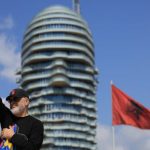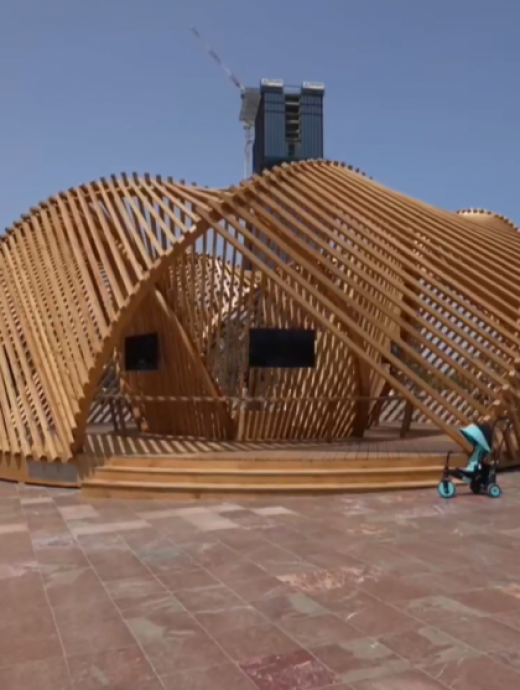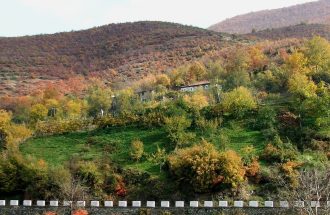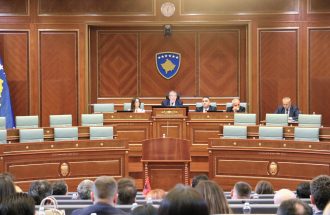“Bread and Heart” – When architecture transforms minds
Speech by the Prime Minister at the Opening of the First Edition of the “Bread and Heart” Festival
Edi Rama
“Bread and Heart” – When architecture transforms minds

Edi Rama
Today happens to be Bayram—a sacred day, a National holiday welcomed by all Albanians, regardless of faith.
It is a day rooted in a story that belongs to Muslims, Christians, Jews, and—perhaps most of all—to the shared spiritual memory of humanity.
A story that travels through time, belief, and geography, and arrives, with uncanny relevance, at the very heart of why we are here today.
Ibrahim—Abraham—receives a vision.
In the Islamic tradition, this vision persists—repeating over several nights. And in that faith, when a dream repeats, it ceases to be a dream. It becomes an instruction. A message. An order.
A divine command: sacrifice your son, Ismail.
The father does not hide it. He tells the son. And the boy—young, lucid, unshaken—replies:
“Do as you are commanded. You will find me among the steadfast.”
And so they walk. Father and son.
Toward the unthinkable—not in fear, but in peace.
Toward a moment that will test the essence of faith: not blind obedience, but radical trust.
And just as the blade is lifted, a ram appears. The sacrifice is redirected.
The life is spared.
The command is fulfilled—not through death, but through surrender.
Because what was truly laid on the altar that day was not a child—it was the ego.
The possessiveness. The illusion of control.
And what remained was the most enduring offering of all: the bond between a dream and the trust to carry it forward.
This is the meaning celebrated today—not the ritual, but the release.
Not the knife, but the mercy.
Not the power to take, but the grace to give. Not the offering of flesh—but of self.
And that, in its own quietly radical way, is precisely why we gather here.
Because Albania—we all know it—is not a country that draws the world’s most visionary architects with money, or glitter, or promises.
It draws them with something far more difficult to define, yet impossible to counterfeit:
A shared belief in the realness of a dream, and in the trust that it can be carried—not even here, but especially here.
Something alive. Something unrepeatable.
Something still free—astonishingly so—from the suffocating comforts of overregulation and pre-packaged certainty.
This festival is, in its own way, a Bayram of the spirit.
An act of stepping forward. Not to dominate the land, but to listen to it.
Not to impose, but to imagine together.
Not to sacrifice one vision for another—but to lay down our egos, so that something common, something greater, can rise in their place.
And if this seems like coincidence—this alignment of sacred day and new beginning—
I must say, I’ve come a long way, in every sense.
And rightly or wrongly, I no longer believe in coincidence.
So I invite you—each of you—to feel the connection between this day and this new adventure.
To receive this unlikely convergence not as chance, but as blessing.
Distinguished architects, young and seasoned, precious friends of Albania who have come, year after year and month after month, from both hemispheres of the Earth to join our mighty Albanian ArchArmy, united by a shared mission that I dare to define today as follows:
Architecture can transform not only spaces but also minds, not only locations but also the imagination of a community—its sense of place, its vision of the future, and its self-confidence.
Dear guests of the ArchArmy,
Dear local architects, students, developers and others,
A very warm welcome to all of you here today—in the living heart of Tirana, in an Albania that today produces more architecture than all of Europe combined, while ascending the final steps that still separate her from the European Olympus.
Here today, we embark together on a new adventure: to create a space within a spiritual form—not one where architecture must be built, but where architects must be heard. Heard about what might be the next move to consider or abandon, the next step to take or to avoid, the next challenge to embrace or release.
Someone might ask: are these dilemmas about architecture, about policymaking, about life itself—or about something else entirely? The truth is, I don’t see sharp lines separating them. When I speak of architecture, I find very little that falls completely outside its grasp. Perhaps I’m mistaken. Perhaps I’m wholly biased—captivated by my fascination with architecture and the minds that imagine and build it. But I believe, deeply and without hesitation, that listening to real architects and tracing the threads of their creative process is an exceptional kind of extracurricular education in policymaking. To understand the forces they contend with—forces of nature and of human will—is to glimpse the inner workings of decision-making itself. And to follow the tension in the arc of compromises they must navigate—from the first glimmer of a bold idea to its fragile descent into the terrain of reality, without breaking it, but making it stand tall—is a masterclass in resilience for anyone determined to give form to their own dreams.
We are here to place a bold bet on architecture as a catalyst in a democratic process where individuals and communities must constantly renegotiate their relationship—both territorial and spiritual—by reflecting on the past and learning how to face the future.
We have found a name for the space we are here to start creating: Bread and Heart Festival.
We’ve also found a motto: “Bring some salt, please!”
The expression “bread, heart, and salt” is the unholy trinity of the holy Albanian hospitality. It once captured the traditional spirit of this land and our old code of honour, which demanded that we welcome guests, travellers, and foreigners by sharing all that we had—but never less than bread for the stomach, salt for the taste, and most importantly, the heart for safety.
And so here we are today, with a mighty ArchArmy on a quest to conquer the future—pausing for a moment to give birth to a festival that, in addition to a name and a motto, also has a goal: to shape, with our bread and our heart, a destination—an annual rendezvous with the future, here in Albania.
Yes, around renowned architects—but not only about them. Not only about their certainties, accomplishments, or trophies, but about what perplexes, disturbs, angers, moves, provokes, and inspires them. The point is to share a space as if it were a question—to reflect on the doubts we carry, the hopes we nurture, and the dreams we still believe are worth chasing.
There is something now puzzling, now disturbing in this word, common. Once the foundation of community, it now feels elusive—even threatening. In an age where hyper-individualism is rewarded, and curated echo chambers masquerade as connection, what we have in common is slipping through our fingers—not necessarily from malice, but through distraction, fatigue, and forgetfulness. We forget how to listen, how to disagree without division, how to build without dominating, how to share without suspicion. And sometimes, those who rescue the word common do so only to divide further—to mobilise it in sinister ways, to exclude, to demarcate boundaries, to create hierarchies of belonging.
And so, this is precisely what we are called to confront: a world of multiplying crises—natural and man-made—where the very idea of we is under siege. Where polarization thrives on fear, and dialogue drowns in noise. Where success is measured by distance rather than closeness, and personal ambition often forgets its responsibility to the whole.
So this gathering is not just a celebration of architecture, but a kind of architecture in itself—a human construction, built on the fragile ruins of what we’ve inherited, and on the dreams of what we still hope to become. It is an invitation to remember and to create. To remember what it means to have something in common—both in trauma and in aspiration—and to create what is still lacking. And, more urgently, to remember how to share it.
Like ancient builders who raised temples not only to shelter gods but to hold communities and receive distant guests;
or like those who, in the wreckage of war, rebuilt not just homes but hopes—we too are called to build. Not monuments of stone, but spaces of meaning. Not just structures of concrete, but bonds of understanding.
That is why it matters—deeply—that some of the most visionary architects of our time, from Europe, the Americas, Japan, South Korea, and China, have chosen to gather here, in Albania. Not as distant observers of an obscure culture, nor as solitary stars casting light on foreign ground—but as participants in a shared experiment: building not just in a place, but with it.
They arrive carrying the weight and grace of their traditions—with ideas shaped by their cities and climates, their histories and materials—and the burdens of crisis, too. Crises back home. Crises felt across a world shrinking by the hour. Crises of their own making. And here, in Albania, something special happens: they are not only received but hosted. Not only hosted but integrated.
Integrated by a country and a people whose landscape is as varied as its past, and whose natural and human patterns are equally hard to trace. Perhaps because of that very unpredictability—because there is no repetition, no simplification, no routine—the past is tragic, and the future, daring. Memory remains raw, and experience remains porous—open to shaping.
From this meeting—between what they bring and what they find—emerges something neither imported nor native, but born in between. A synthesis.
A conversation not only in concrete, texture, and light, but in blood, flesh, and time. Not a collage of styles, but a communion of intentions. A weaving of narratives, visions, and vulnerabilities.
What emerges here is not just a building, but a shared authorship of place. A collective authorship, where singular signatures dissolve into something greater—and each hand, each eye, each memory becomes a trace, connected to another trace and to another trace and to another trace, like footprints forming a path.
And maybe this is the most precious part: that in building here, architects don’t simply leave a contribution or a mark—they carry something forward. They help us see not one path but many.
Sometimes in straight lines. Sometimes in circles. Drawing a geometry of belonging.
There is real energy in what architecture can generate. An energy that flows through us, transforms us, and reshapes the place itself. An energy sparked by Albania’s questions, and our shared ambition to answer them—for the good not only of Albania, but also of each participating country, our continents, and our common world.
An energy drawn from the urgencies of our time, and transformed into the collective will to respond—not just out of professional curiosity, but from the human impulse to understand.
And that is where true beauty lies: in the moment we meet each other beyond our roles, beyond our résumés. In that rare space where professional knowledge melts into human instinct—where design stands beside doubt, and skill walks with vulnerability. It is there, in that quiet tension, that something strong and lasting is built. Not just in architecture. But through architecture—for all of us.
I’m genuinely moved today, because it’s fair to say, in front of so many remarkable minds (I hate calling them “stars”), that Albania has become a harbour of hope. Not as a slogan, but as a lived experience—for international architects now arriving in numbers we couldn’t have imagined just a few years ago. And for developers too, who are slowly learning that hope doesn’t grow by avoiding higher standards—but by rising to meet them. By discovering the deeper value of what they build—not just for their own gain, but for this country, their country, and the world.
Tirana today is no longer just a stage—it is a catalyst. Not just a location, but a collaborator. The projects born in Albania aren’t local mediocrities or global clichés; they’re alive, resonant, and relevant—because they emerge from the fusion of what is deeply rooted and what is radically open.
And in a world obsessed with icons, authorship, and ownership, what is quietly unfolding here feels almost subversive: the making of something truly common—yet like nothing else.
This is what this festival celebrates. And, more importantly, what it dares to build upon: the truly common—not as nostalgic memory or utopian slogan, but as an ongoing act of creation.
A beautiful sign of this spirit is in the guests brought by the ArchArmy. Many came not with staff or apprentices, but with companions from other walks of life. People who may never draw a line—but who carry what matters most: the human experience of a unique gift.
They remind us: the future isn’t built alone. And certainly not within the borders of our own expertise. Architecture may be the clearest example of this. And these guests matter precisely because what they bring is not technical, but emotional, cultural, intuitive. They bring stories, contradictions, questions. They bring the kind of wisdom that professional spaces often forget. And by doing so, they complete the picture.
Because this festival is not about architecture as a profession—it is about architecture as the closest human act to the divine: the act of creating spaces where life can happen, grow, and protect itself. Where our ancient need to belong, to connect, and to leave a mark becomes something we can all share.
If what is truly common begins not with certainty or tools—but with courage to let others in, and the humility to be changed by their presence—then this festival, beginning today, is exactly the right thing, at exactly the right time, in exactly the right place.
Let’s see where it leads. But wherever it does—or even if it leads nowhere—let’s make sure that while we’re together, the bread is abundant, the heart is wide open, and the salt is never missing when it’s needed.



